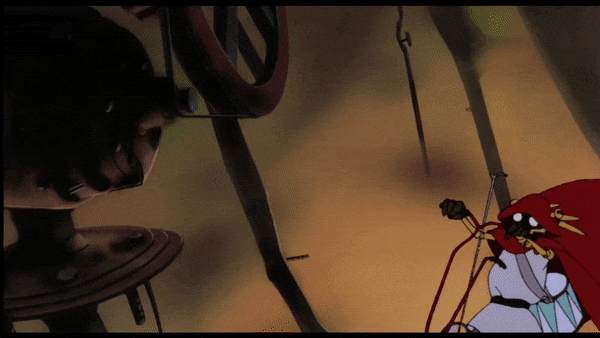#European technology
Explore tagged Tumblr posts
Text
BSc and Menz Violet Crumble Join Forces to Shatter Protein Bar Perceptions in an Australian-First”
BSc (one of Australia’s most recognised health supplement brands) announced this week that it has partnered with Menz Confectionery in an Australian first to create the BSc x Violet Crumble soft protein bar! Yes, you heard that right. Now you can satisfy your candy bar cravings without as much guilt. Plus get a hit of protein! In fact, the new soft protein bar comes with 16g of protein, has a…

View On WordPress
#16g protein#4.5 health star#Aussies#Australian first#BSc#candy bar cravings#candy-like#Coles#collaboration#delicious fusion#European technology#exploring new territories#fitness friendly#Guilt-Free#guiltless indulgence#health conscious#health supplement#honeycomb#iconic flavour#iconic taste#innovative format#less than 3g sugar#Limited edition#low sugar#May 6th#Menz Confectionery#National Marketing Manager#Polly Love#protein hit#protein snack
0 notes
Text
two Bad History Takes don't make a Good History Take
right: throughout history, many non-European civilizations have had impressive technologies for their time periods, and this is often minimized by white supremacist interpretations of the past. just like their counterparts in Europe, they had a complex range of advancements and limitations given the materials around them, their worldviews, and the areas of technology on which their society placed a high priority
wrong: the Aztecs had FLYING CARS and the British were EATING FRIED SHIT AS A DELICACY
(and before anyone says "um but Europe WAS disgusting!" the whole point of this post is that that was also mostly a myth. come on, people)
#history#bad history#yes they had attempts at sanitation technology in Europe#yes they had aspects that were less advanced in non-European civilizations#Europe doesn't have to be caked in waste for the accomplishments of other regions to be impressive#'but Europe WAS caked in waste lol!' no it wasn't. at least not the way you're thinking#yes there were sanitation issues at times but that was not unique to Europe#it wasn't even unique to the past; we still struggle with it today sometimes
120 notes
·
View notes
Text

#artificial intelligence#ai#artificially generated#computer#software#future#futuristic#futurism#technology#technews#big tech#brave new world#orwell 1984#dune 1984#walden#elites#trump#donald trump#democrats#president trump#silicone valley#san jose california#seattle#google#united nations#prison planet#european union#social media#life hacks#life lessons
43 notes
·
View notes
Text

SUMMARY: When a motorbike gang kills an occultist, the evil spirit he was summoning inhabits a damaged bike. The bike is then bought and restored, but reveals its true nature when it tries to exact vengeance on the gang.
#i bought a vampire motorcycle (1990)#horror comedy#technological horror#1990s#united kingdom#european movie#horror#movie#poll#more than 50% havent heard
71 notes
·
View notes
Text

Distress, War and Misery in the Age of Their Technical Reproducibility, ai art 2024 after a prompt from ZZI
#landscape#metaphysical art#zero zoxx international#european art#misery#war#distress#technology#reproducibility#ai generated#ai art#2024
38 notes
·
View notes
Text
"As countries around the world begin to either propose or enforce zero-deforestation regulations, companies are coming under growing pressure to prove that their products are free of deforestation. But this is often a far from straightforward process.
Take palm oil, for instance. Its journey from plantations, most likely in Indonesia or Malaysia, to store shelves in the form of shampoo, cookies or a plethora of other goods, is a long and convoluted one. In fact, the cooking oil or cosmetics we use might contain palm oil processed in several different mills, which in turn may have bought the raw palm fruit from several of the many thousands of plantations. For companies that use palm oil in their products, tracing and tracking its origins through these obscure supply chains is a tough task. Often it requires going all the way back to the plot level and checking for deforestation. However, these plots are scattered over vast areas across potentially millions of locations, with data being in various states of digitization and completeness...
Palmoil.io, a web-based monitoring platform that Bottrill launched, is attempting to help palm oil companies get around this hurdle. Its PlotCheck tool allows companies to upload plot boundaries and check for deforestation without any of the data being stored in their system. In the absence of an extensive global map of oil palm plots, the tool was developed to enable companies to prove compliance with regulations without having to publicly disclose detailed data on their plots. PlotCheck now spans 13 countries including Indonesia and Malaysia, and aims to include more in the coming months.
Palm oil production is a major driver of deforestation in Indonesia and Malaysia, although deforestation rates linked to it have declined in recent years. While efforts to trace illegally sourced palm oil have ramped up in recent years, tracing it back to the source continues to be a challenge owing to the complex supply chains involved.
Recent regulatory proposals have, however, made it imperative for companies to find a way to prove that their products are free of deforestation. Last June, the European Union passed legislation that prohibits companies from sourcing products, including palm oil, from land deforested after 2020. A similar law putting the onus on businesses to prove that their commodities weren’t produced on deforested land is also under discussion in the U.K. In the U.S., the U.S. Forest Bill aims to work toward a similar goal, while states like New York are also discussing legislation to discourage products produced on deforested land from being circulated in the markets there...
PlotCheck, which is now in its beta testing phase, allows users to input the plot data in the form of a shape file. Companies can get this data from palm oil producers. The plot data is then checked and analyzed with the aid of publicly available deforestation data, such as RADD (Radar for Detecting Deforestation) alerts that are based on data from the Sentinel-1 satellite network and from NASA’s Landsat satellites. The tool also uses data available on annual tree cover loss and greenhouse gas emission from plantations.
Following the analysis, the tool displays an interactive online map that indicates where deforestation has occurred within the plot boundaries. It also shows details on historical deforestation in the plot as well as data on nearby mills. If deforestation is detected, users have the option of requesting the team to cross-check the data and determine if it was indeed caused by oil palm cultivation, and not logging for artisanal mining or growing other crops. “You could then follow up with your supplier and say there is a potential red flag,” Bottrill said.
As he waits to receive feedback from users, Bottrill said he’s trying to determine how to better integrate PlotCheck into the workflow of companies that might use the tool. “How can we take this information, verify it quickly and turn it into a due diligence statement?” he said. “The output is going to be a statement, which companies can submit to authorities to prove that their shipment is deforestation-free.” ...
Will PlotCheck work seamlessly? That’s something Bottrill said he’s cautiously optimistic about. He said he’s aware of the potential challenges with regard to data security and privacy. However, he said, given how zero-deforestation legislation like that in the EU are unprecedented in their scope, companies will need to sit up and take action to monitor deforestation linked to their products.
“My perspective is we should use the great information produced by universities, research institutes, watchdog groups and other entities. Plus, open-source code allows us to do things quickly and pretty inexpensively,” he said. “So I am positive that it can be done.”"
-via Mongabay, January 26, 2024
--
Note: I know it's not "stop having palm oil plantations." (A plan I'm in support of...monocrop plantations are always bad, and if palm oil production continues, it would be much better to produce it using sustainable agroforestry techniques.)
However, this is seriously a potentially huge step/tool. Since the EU's deforestation regulations passed, along with other whole-supply-chain regulations, people have been really worried about how the heck we're going to enforce them. This is the sort of tool we need/need the industry to have to have a chance of genuinely making those regulations actually work. Which, if it does work, it could be huge.
It's also a great model for how to build supply chain monitoring for other supply chain regulations, like the EU's recent ban on companies destroying unsold clothes.
#deforestation#palm oil#indonesia#malaysia#agriculture#european union#united states#save the forest#open source#technology#mapping#forestry#satellite#good news#hope#climate solutions#environment
122 notes
·
View notes
Text

Astronomers have discovered Gaia BH3, the largest known stellar-mass black hole in the Milky Way, located in the constellation Aquila. This marks the third black hole found using the European Space Agency’s Gaia telescope, following Gaia BH1 (2022) and Gaia BH2 (2023).
𝐖𝐡𝐚𝐭 𝐌𝐚𝐤𝐞𝐬 𝐆𝐚𝐢𝐚 𝐁𝐇𝟑 𝐒𝐩𝐞𝐜𝐢𝐚𝐥?
Massive Discovery – With a mass 33 times that of the Sun, Gaia BH3 is the heaviest stellar-mass black hole in our galaxy.
Silent Giant – Unlike many black holes, Gaia BH3 is not actively pulling in matter and does not emit X-rays, making it an example of a “silent” black hole.
Formation – Stellar-mass black holes form when massive stars (5-10 times the Sun's mass) collapse under their own gravity.
#general knowledge#affairsmastery#generalknowledge#current events#current news#upscaspirants#upsc#generalknowledgeindia#world news#news#breaking news#technology#public news#space exploration#space#planets#astronomy#nasa#outer space#galaxy#gaia#black hole#nasa science#science#physics#science news#european space agency
13 notes
·
View notes
Text













Musst keine Angst haben. Jeder hat mal so angefangen.
Coming Out (1989), dir. Heiner Carow
#lala takes screenshots of obscure movies because no one else will#!!!#finally#the saga continues!#queer cinema#eastern european cinema#east germany#gdr#ddr#defa#as someone put it: gdr's first and last gay movie#please do not zoom into these pictures#even filmfriend has anti screenshot technology now#so i had to first screen record the entire film with a program i managed to find that worked#and then take the screenshots#which i think didnt help the quality#anyway#a very good spectacular film#it's on filmfriend#ie you can watch it with your german library card#also this movie tore down the berlin wall by its mere presence#(it premiered in east berlin on 9 nov 89)#david hasselhoff who#jk#unless...#also i couldnt take a decision if my life depended on it#so have 13 images#i marvel at people who can narrow a film down to like... 5 pictures#film#*
36 notes
·
View notes
Video
Spiral from the side by European Space Agency Via Flickr: What kind of astronomical object is this? It doesn’t look quite like the kinds of galaxies, nebulae, star clusters or galaxy clusters which Hubble normally brings us images of. In fact, this is a spiral galaxy, named UGC 10043 — we just happen to be seeing it directly from the side! Located roughly 150 million light-years from Earth in the constellation Serpens, UGC 10043 is one of the somewhat rare spiral galaxies that are seen edge-on. From this point of view, we see the galaxy’s disc as a sharp line through space, overlain with a prominent dust lane. This dust is spread across the spiral arms of UGC 10043, but it looks very thick and cloudy when viewed from the side. You can even see the lights of some active star-forming regions in the arms, shining out from behind the dust. Strikingly, we can also see that the centre of the galaxy sports a glowing, almost egg-shaped ‘bulge’, rising far above and below the disc. All spiral galaxies have a bulge like this one as part of their structure, containing stars that orbit the galactic centre on paths above and below the whirling disc; it’s a feature that isn’t normally obvious in pictures of galaxies. The unusually large size of this bulge compared to the galaxy’s disc is possibly thanks to UGC 10043 siphoning material from a nearby dwarf galaxy. This may also be why the disc is warped, bending up at one end and down at the other. Like most of the full-colour Hubble images released by ESA/Hubble, this image is a composite, made up of several individual snapshots taken by Hubble at different times and capturing different wavelengths of light. You can see the exact images used in the sidebar on this page. A notable aspect of this image is that the two sets of Hubble data used were collected 23 years apart, in 2000 and 2023! Hubble’s longevity doesn’t just afford us the ability to produce new and better images of old targets; it also provides a long-term archive of data which only becomes more and more useful to astronomers. [Image Description: A spiral galaxy seen directly from the side, such that its disc looks like a narrow diagonal band across the image. A band of dark dust covers the disc in the centre most of the way out to the ends, and the disc glows around that. In the centre a whitish circle of light bulges out above and below the disc. The tips of the disc are a bit bent. The background is black and mostly empty.] Credits: ESA/Hubble & NASA, R. Windhorst, W. Keel; CC BY 4.0
#UGC 10043#ESA#European Space Agency#Space#Universe#Cosmos#Space Science#Science#Space Technology#Tech#Technology#HST#Hubble Space Telescope#Galaxy#Supernova#NASA#Creative Commons#Stars#Star#Serpens#Spiral Galaxy#flickr
13 notes
·
View notes
Text
Good morning. 🌳🐦☕
3 December 2024

It's babble day.
Imagine what you would think in 1974 if you saw somebody with an iPhone, using the flashlight in the dark. It would be an odd sight, if you were paying attention. You were a sci-fi fan you might think "Tricorder," a device built by Wah Ming Chang a prop designer for the original Star Trek TV series. The problem is that the iPhone is too small to me a Tricorder. It also is too sleek to be a Star Trek communicator, which looked like the flip phones of half a century later. I wonder where things will be in another 50 years. On a related subject William Shatner is 93 years old and still has a TV show.
"Any sufficiently advanced technology is indistinguishable from magic." - Arthur C. Clarke
#photo#photography#photographer#photographylovers#wildlife#nature#bird#birds#birding#birdwatching#birdphotography#morning#technology#tree#abstract#abstractPhotography#birds of north america#birdsphotography#birdlovers#european starling
12 notes
·
View notes
Text
I cannot recommend this podcast interview with Cory Docotorow enough. It's about so much more than green tech and enshittification. anyone who uses the internet should listen.
#podcast#podcasts#Cory Docotorow#solar punk#green energy#climate change#climate crisis#enshittification#internet#tech bros#technology#canada#european union#monopoly#right to repair#capitalism is a scam#privacy#green technology#cars#computers#linux#social media#neoliberalism#economics#economy#fair trade#open source#union workers#labor vs capital#labor movement
7 notes
·
View notes
Text

Welcome to my page :-)
I’m the hatman, I draw. I am robot/bird/entity therian. He/it. Autistic. My interests are listed in this posts tags. I will block discourse pages and “problematic” people.
My art tag: #Hatmandraws
#kinitopet#doko demo issyo#resident evil#team fortress 2#katamari damacy#robot carnival#pizza tower#half life#hlvrai#pokemon#scp foundation#jojos bizarre adventure#dave and bambi#ascii art#love death and robots#sanrio#sonic the hedgehog#mario bros#pikmin#birds#computers#robotics#technology#fruitiger aero#fruitiger metro#objectum#Eastern European art#liminal spaces#blog intro#pinned intro
25 notes
·
View notes
Text
youtube
Polish Defense Spending to Hit 4.7% of GDP by 2025 | Gen. Jarosław Kraszewski
Poland's largest defense expo is underway in Kielce, with over 750 companies displaying cutting-edge military technology. Notably, Poland is increasing its defense budget to 4.7% of its GDP by next year. Amid the signing of major contracts, including an airport protection system from a Spanish firm, there’s also a push to develop domestic production, such as a planned ammunition factory. Defense Minister Władysław Kosiniak-Kamysz has also emphasized the need for "precise" contracts, including ongoing negotiations for more K2 tanks from South Korea. General Jarosław Kraszewski, former Director of the Armed Forces Supervision Department at the Polish National Security Bureau, joined us today on TVP World to discuss these developments.
P.S. The Poles have made a very correct decision! Glad to hear: "Poland is increasing its defence budget to 4.7% of its GDP". Considering the high level of political corruption in the West and the extent to which Russian spies and agents of influence have infiltrated Western societies, Western security "guarantees" and "international laws" cannot be relied upon at all: 1) The Russian imperialists would never have started the war against Ukraine if Western capital, specifically German, French, Dutch, American and all other businessmen, had not invested huge funds in the Russian economy and in the restoration of the Russian military potential (the Russians obtained the military technology they lacked, both directly and indirectly, the West donated for the Russians possibility to steal Western military technology secrets without hindrance); 2) The West significantly reduced the military potential of Western European countries and CATEGORICALLY REFUSED TO INCREASE the defense of Eastern Europe and the Baltic regions at leas since 2006. Even when the Russian invasion of Georgia began in Europe in August 2008, the West pretended that nothing was happening...;
Even more, Western politicians started pushing the idea that NATO is no longer needed, the Western fiasco in Syria, and the West went so far in an absurd situation that they even started talking about giving the Russians a "sphere of influence" in Europe...it must be allowed to attack Ukraine and the Baltic States without hindrance. A. Merkel's German policy in relations with Russia was a particularly big shame for Western politicians, and of course the political circus organized by Donald Trump in America.... It is such a shame that there are no words to describe it... Of course, the Kremlin and Beijing saw all this activity of the Western useful idiots very well... the Russian army, together with Iran, entered Syria without interference, continued attacks in Ukraine, Beijing is becoming more and more aggressive, and this is only thanks to the useful idiots of the West, who have betrayed absolutely all the West's civilization values....
#Poland#defence of freedom#indigenous military industry#european history#independence#russian invasion#military technology#Youtube#Kielce#Baltic States
7 notes
·
View notes
Text

SUMMARY: Badly in need of money, a young woman takes a job supervising an advanced learning program that quickly spirals out of control.
#let's be evil (2016)#science fiction#technological horror#2010s#united kingdom#european movie#horror#movie#poll
21 notes
·
View notes
Text










#SpaceHopper#asteroid explorer#asteroid#gravity#hopping motion#space exploration#ETH Zurich#Switzerland#LunarLeaper#Ryugu#Mobile Asteroid Surface Scout#european space agency#AstroForge#Valerio Schelbert#space#robot#astronaut#technology
6 notes
·
View notes
